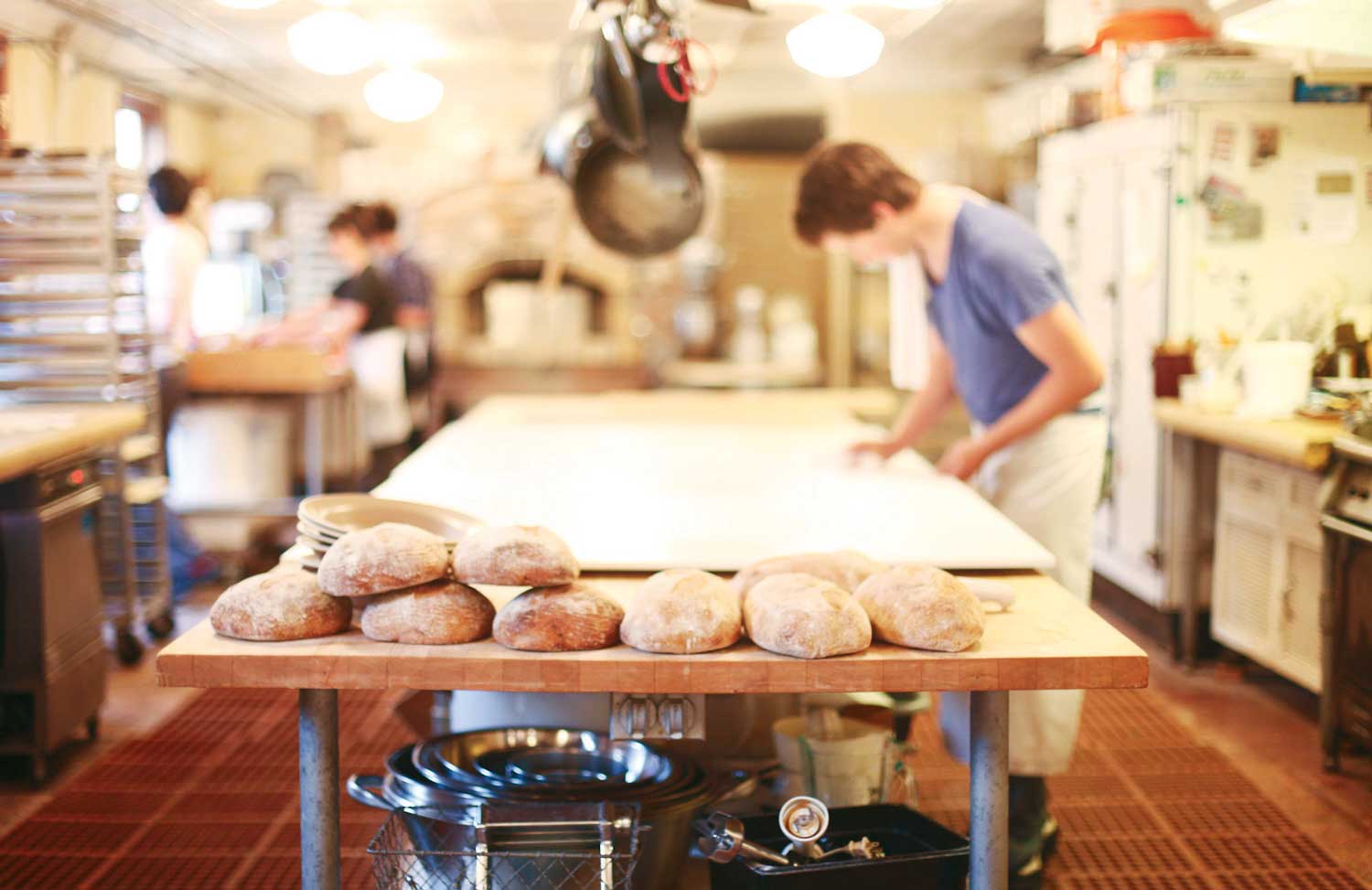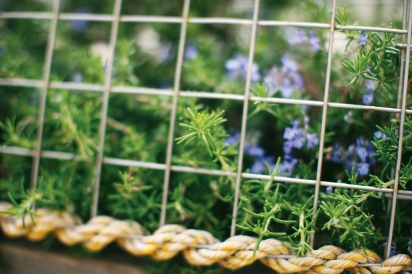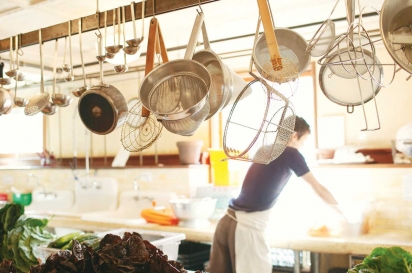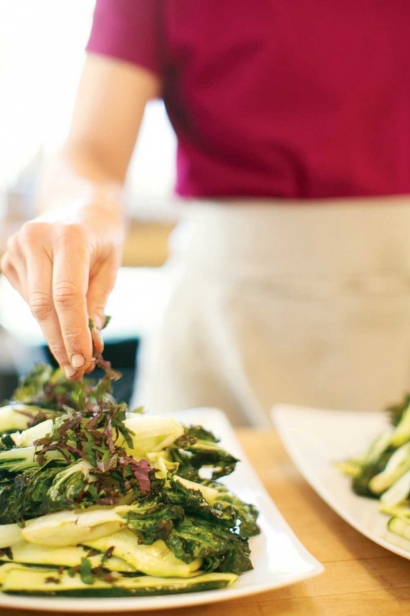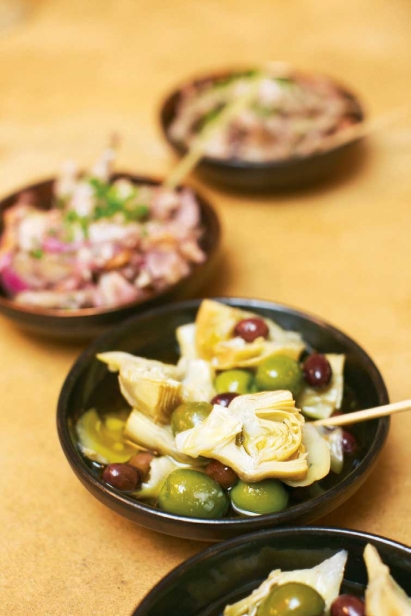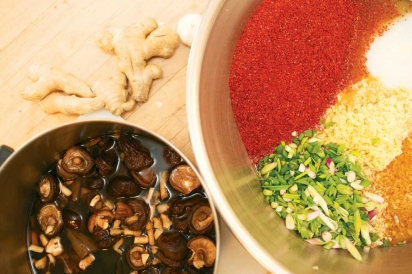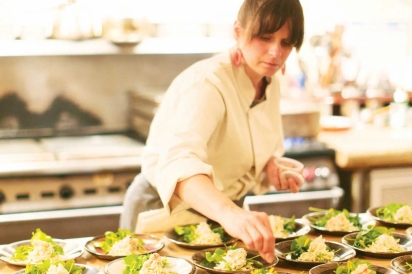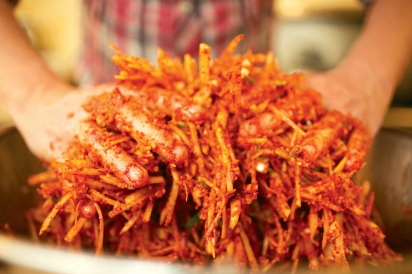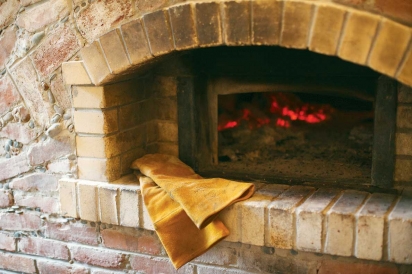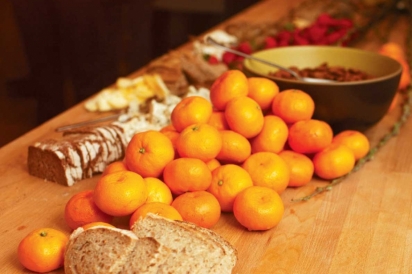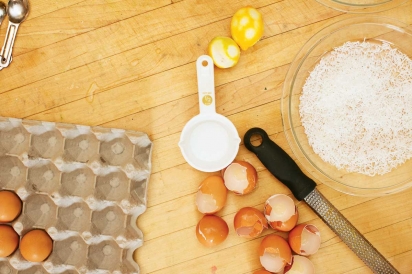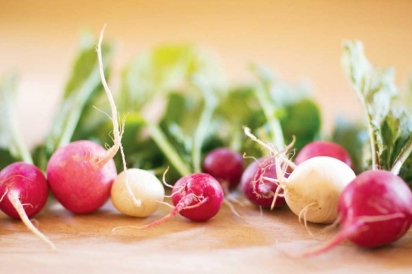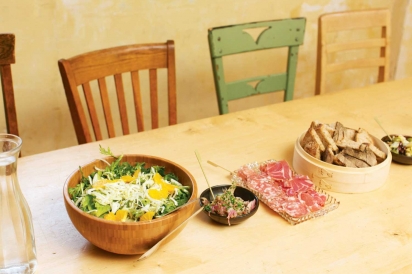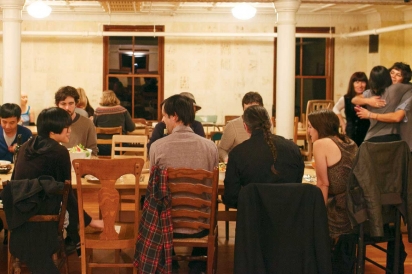Headlands Center for the Arts: Nourishing Creativity
Headlands Center for the Arts (HCA) inhabits former military buildings at historic Fort Barry in the Marin Headlands, deep in the Golden Gate National Recreation Area. Artists, many of whom hail from from other countries, spend up to three months there composing, choreographing, painting, photographing, sculpting, weaving or writing as westerly winds rage off the Pacific, foghorns bellow and coyotes howl.
In the midst of the natural beauty and military history, the presence of artists is not an enigma. They are creative spirits in this raw and magical place. Their work is a contemporary interpretation of a landscape where time has been etched into a rocky shoreline by crashing waves and the military fortifications built into hillsides are reminders of enemies who never arrived.
While the mission here might be art, the pleasure center of the HCA is its kitchen. The kitchen and dining hall, still bearing its military moniker, the Mess Hall, were initially designed to feed 120 soldiers. The original Mess Hall was a no-nonsense low-ceilinged, dark and dingy room.
In 1989, the HCA commissioned artist Ann Hamilton to undertake a major redesign. Ann is known for taking public spaces and creating immersive, collective experiences guided by the social history and architecture of sites. She spent one year at the HCA, hiking through the surrounding landscape and talking with staff and artists, and set out to create a dining space that was warm and comfortable, but also reflected the surrounding natural world.
Walls of the Mess Hall were stripped and refinished, then covered with images of local flora and fauna. The kitchen itself was opened up and new cooking equipment was installed, including its central feature, a wood-burning oven designed by Alan Scott, the passionate brick oven builder and baker from West Marin (Editor’s note: For more information on Alan Scott, see Part 3 of “Amber Waves of Grain” in the Winter 2012 issue of Edible Marin & Wine Country).
Ann designed and built the dining tables with assistance from artist Doug Hollis. Chairs and dishware were donated at a “kitchen shower” and proved to be as diverse and distinct as the people who gather there. Most of the plates and platters have been donated by Sausalito’s Heath Ceramics, and practically provide a retrospective of the HCA over the years.
“When artist Ann Hamilton and her collaborators were rehabilitating the historic space, they knew that in addition to designing a kitchen where delicious food could be prepared and served, they were also creating a social, convivial gathering place where creative individuals could exchange ideas over a wonderful, homemade meal,” HCA Executive Director sharon maidenberg told me by email. “Today the dining hall is the heart of the organization in many ways.”
I was an Affiliate Artist at the HCA for two years. The Affiliate program is for artists who live in the area and use studios at the HCA during the day. They are also encouraged to join the Artists in Residence at dinnertime. I jumped at the opportunity, and it quickly became my favorite place to eat in Northern California. On any given night you could be wedged between a composer from Sweden and a painter from Mexico—or a poet from Oakland.
The HCA emphasizes the artist’s creative process, not the finished product, and the design of these evening meals creates a space for artistic disciplines to cross-pollinate. The dinners—with food served family style and requiring everyone to pitch in with cleanup—certainly facilitate, if not create, this community. The food is rustic Californian and might include housemade pasta, sauerkraut, pickles and charcuterie, served alongside locally sourced cheeses, seafood, meats and produce.
There is always bread, freshly baked by Eduardo Morell. Eduardo originally volunteered at the HCA while he was studying filmmaking at the San Francisco Art Institute. Jessica Prentiss was then the HCA’s head chef. According to Eduardo, “This community blew me away.” He decided to stay, and eventually went from assistant to head chef. Eduardo now uses the HCA’s wood-burning oven to bake a wide array of breads every Wednesday evening, offering them for sale to the public.
The current head chef at the HCA is Damon Little. Damon has played guitar in many indie rock bands, yet doesn’t act like a rock star. He’s self-effacing, quiet until you get to know him, and clearly loves his job. He grew up in Sonoma County, so seasonal and local food are not new concepts to him. But, he explained to me, “I have direct connection with the artists I’m feeding. From our conversations, I know what people get excited by, so I can respond to that. Also, I have the freedom to experiment, play and try new things. It’s almost like a cooking residency.”
While the nightly dinners are not open to the public, the HCA hosts open houses, special dinners and events and workshops throughout the year, giving visitors the opportunity to wander through its studios and even swing by the Mess Hall for a taste of what nourishes the HCA artists’ bodies, minds and souls.


